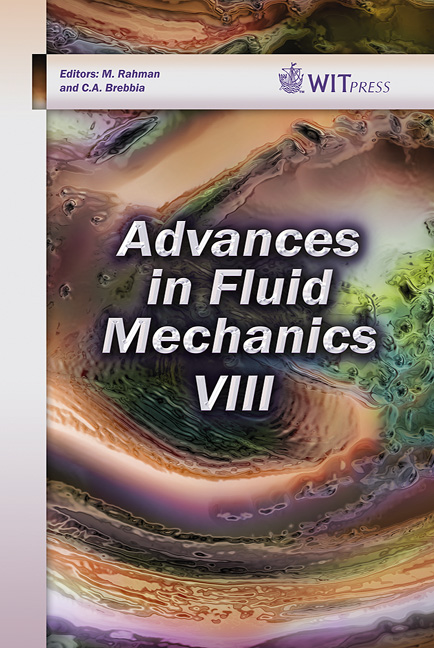Vorticity Confinement Method Applied To Flow Around An Ahmed Body And Comparison With Experiments
Price
Free (open access)
Transaction
Volume
69
Pages
12
Page Range
55 - 66
Published
2010
Size
5,296 kb
Paper DOI
10.2495/AFM100051
Copyright
WIT Press
Author(s)
M. Forman, H. Jasak, J. Volavy, M. Jicha, C. Othmer & H. P. Bensler
Abstract
In this paper, the Vorticity Confinement method (VC) is presented for the calculation of flow field around a bluff body. The VC method was originally proposed by Fan et al. (\“Computing blunt body flows on coarse grids using vorticity confinement”, J. Fluids Engineering, 124(4):1–18, Dec 2002) for the computation of thin vortical regions in the high Reynolds number incompressible flows. Steinhoff et al. (Large Eddy Simulation: Computing Turbulent Flow Dynamics, Chapter 12: Turbulent Flow Simulations Using Vorticity Confinement: Cambridge University Press, 2006) claim that VC is capable of capturing most of the main features of high-Re turbulent flows without the massive mesh resolution needed for Reynolds-Averaged Navier-Stokes (RANS) solutions or Large Eddy Simulation (LES). The aim of the method is to capture small-scale vortical structures efficiently. The presented study assesses the VC method (namely the first formulation, referred to as VC-1, which involves first derivatives of velocity), for external aerodynamics presented here on a well documented simplified car - Ahmed bluff body with different slant angles, namely 25° and 35°. These slant angles were chosen because the 35° slant angle supports the boundary layer separation and therefore stronger wake (also stronger oscillations of the wake), while at the 25° slant angle no separation takes part and the wake is much weaker and also more stable. The VC method was applied using different values for the diffusion parameter and confinement
Keywords
turbulent flow, Vorticity Confinement, Ahmed body, experiments





